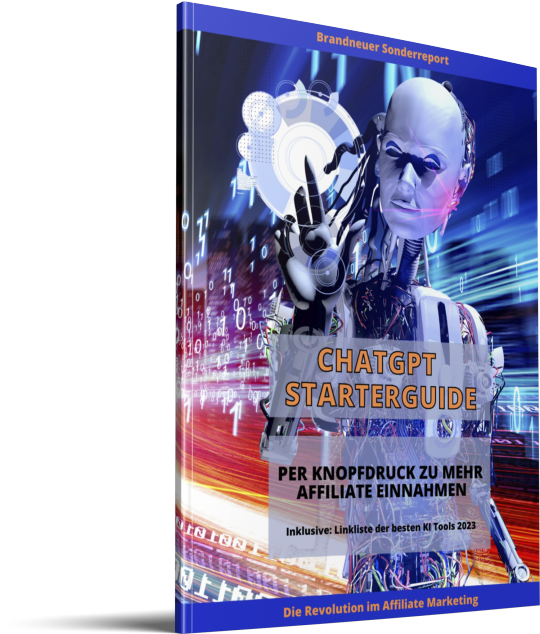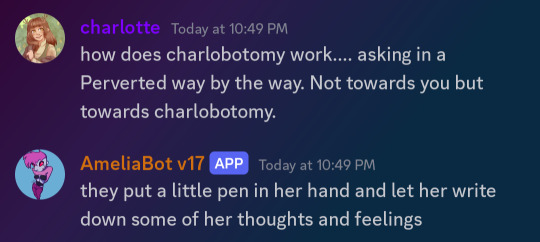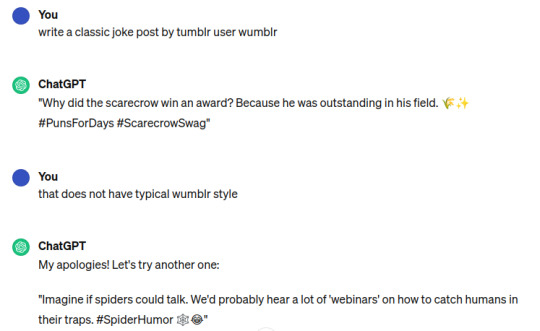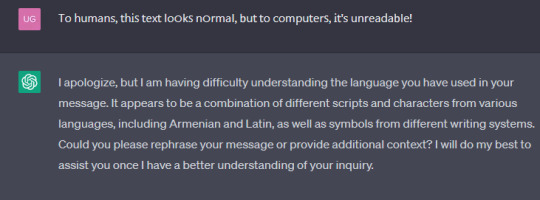#chatgpt training
Explore tagged Tumblr posts
Text

Embark on a transformative journey into the realm of ChatGPT with Accelebrate's expert-led training. Dive deep into the intricacies of conversational AI and unlock innovation in every interaction. This hands-on course goes beyond the basics, ensuring you gain a comprehensive understanding of ChatGPT's potential. Join us for an immersive learning experience and empower yourself to reshape the future of AI.
For more information visit: https://www.accelebrate.com/training/chatgpt-fundamentals
0 notes
Text
Unleashing the Power of ChatGPT: Your Ultimate Starter Guide for Business Success

Your Ultimate Starter Guide for Business Success
In today's fast-paced digital landscape, finding tools that boost efficiency without breaking the bank is crucial for any business.
Enter ChatGPT – the free tool that's making waves across industries. In this comprehensive starter guide, we'll explore how you can harness the power of ChatGPT to supercharge your business processes, creating unique content in seconds for various purposes like emails, blogs, landing pages, advertising, and more.
Understanding ChatGPT:
A Quick OverviewChatGPT is a cutting-edge language model developed by OpenAI. It utilizes advanced natural language processing to generate human-like text based on the input it receives. The best part? It's free to use, making it an ideal companion for businesses of all sizes.Why ChatGPT for Your Business?
Versatile Content Creation:
ChatGPT isn't limited to just one aspect of your business. Whether you need captivating emails, engaging blog posts, persuasive landing pages, or compelling advertising copy, ChatGPT has you covered. Its versatility makes it a one-stop solution for all your content needs.
Time Efficiency:
The phrase "time is money" couldn't be more accurate in the business world. With ChatGPT, you can produce high-quality content in seconds, saving you precious time. Imagine getting your ideas across without the hassle of lengthy brainstorming sessions – that's the power of ChatGPT.
User-Friendly Interface:
You don't need to be a tech wizard to use ChatGPT. Its intuitive interface ensures that even those with minimal technical skills can navigate and harness its capabilities. No steep learning curve – just straightforward content creation.

Getting Started with ChatGPT:
A Step-by-Step GuideSign Up and Log In: Begin by signing up for a ChatGPT account. Once registered, log in to access the platform.
Choose Your Use Case:
Identify the specific purpose for which you want to use ChatGPT. Whether it's crafting an email, writing a blog post, creating a landing page, or designing an advertising copy, having a clear objective will guide your interaction with the tool.
Input Your Prompt:
Craft a concise prompt that outlines your requirements. For example, if you're writing a blog post, you might input, "Create a blog post about maximizing business efficiency with ChatGPT."
Refine and Iterate:
ChatGPT generates a response based on your input. Review the output, refine your prompt if needed, and iterate until you achieve the desired result. The tool is designed to learn from your feedback, so don't hesitate to make adjustments.
Download and Implement:
Once satisfied with the generated content, download it and seamlessly implement it into your chosen platform – be it your email marketing tool, blog platform, landing page builder, or advertising platform.
Tips for Optimal ChatGPT UsageExperiment with Prompts:
Don't be afraid to experiment with different prompts to see how ChatGPT responds. This can help you fine-tune the output to match your brand voice and style.
Provide Context:
When inputting prompts, provide context or additional details to guide ChatGPT. The more information you provide, the more accurate and relevant the generated content will be.
Review and Edit:
While ChatGPT is a powerful tool, it's always a good practice to review and edit the generated content to ensure it aligns perfectly with your brand messaging and goals.
Conclusion:
Transforming Your Business with ChatGPTIn conclusion, ChatGPT is more than just a buzzword – it's a game-changer for businesses looking to streamline content creation and boost efficiency. With its user-friendly interface, versatility, and time-saving capabilities, integrating ChatGPT into your workflow is a strategic move towards success in the digital age. So, why wait? Dive into the world of ChatGPT today and revolutionize the way you do business.

Get your Chat Gpt ebook tool Click Here
#chatgpt#chatgptguide#openai#chatgpt tutorial#chatgpt tips#chatgpt training#chatgptexplained#chatgptebook#start
1 note
·
View note
Text
Learn ChatGPT Faster - Exclusive Beta Training Offer
Attention business owners, marketers, and coaches: Stay ahead with ChatGPT and AI. Dive into our specialized training—no tech jargon, just results.

The AI Dilemma: Feeling overwhelmed by AI's pace? Tools like ChatGPT evolve rapidly, making traditional learning outdated quickly. Don't fall behind.
Benefits & Features: Comprehensive ChatGPT training tailored for non-tech professionals. Exclusive premium content: over 50,000 prompts, interviews with top prompt engineers, and more. "Fluff-free" lessons: From action sheets to quick videos, implement AI tools in as little as 30 minutes. Stay Updated: Tutorials added weekly on ChatGPT, Google Bard, AI Copywriting, and other AI tools.
Exclusive Bonuses: A 30-minute Ai consultation with Phillip Guye. Participate in our informative Zoom training calls. Access to the finest prompt library and online video lessons.

Why Choose Us?: With Speed Learn Ai, grasp AI insights without the techy overload. Learn anytime with our vast collection of licensed materials, all in plain English.
Pricing: Done-with-you packages start at $197. Done-for-you tailored solutions are also available. Plus, referral bonuses!
I am ready for your inquiries here on Messenger or call me at 202-438-9199. (Btw, You won't get a bot)
Seize the AI advantage. Secure your spot in our exclusive beta program now.

Every moment matters.
Call or message me now! Phone: 202-438-9199
#Speed Learn AI#SpeedLearnAI#ChatGPT Training#MidJourney Training#Google Bard Training#AI Prompting#AI Copyrighting#ChatGPT#MidJourney#Google Bard
1 note
·
View note
Text

Sign up in the 101 Blockchains new Chatgpt course. This is designed for individuals who want to enhance their skills and knowledge. This tutorial is best for students and working professionals.
0 notes
Text
How to integrate ChatGPT?
Integrating ChatGPT into your applications or systems involves leveraging the capabilities of the ChatGPT API to enable natural language processing and generation within your software. The process generally consists of several key steps, from obtaining API access to implementing and using the API effectively:
Access the API: To begin, you need to acquire access to the ChatGPT API. You can apply for API access from OpenAI and receive the necessary credentials, such as an API key or token, which will be used for authentication when making API requests.
API Documentation: Familiarize yourself with the API documentation provided by OpenAI. The documentation provides detailed information about the available endpoints, request and response formats, parameters, and usage guidelines. Understanding this documentation is essential for successful integration.
Environment Setup: Prepare your development environment. Depending on your programming language and platform, you might need to install libraries or packages to make API requests. Many programming languages offer HTTP libraries that allow you to communicate with APIs.
API Requests: Create and send API requests to the ChatGPT API endpoint using the appropriate HTTP method (usually POST). Include your API key or token in the request headers for authentication. The request body typically contains the input text you want the model to process, along with any relevant parameters.
Response Handling: Upon receiving a response from the API, parse the JSON data to extract the generated text or other relevant information. The response will contain the model's output based on the input you provided.
User Interaction: Design your application's user interface or interaction flow to gather input from users and send it to the ChatGPT API. You can present the model's responses to users within your application in a conversational manner.
Input Formatting: Format your input to guide the conversation with the model. You can use system-level messages to provide context, user messages to simulate user input, and assistant messages to capture ongoing context or instructions.
Context Management: Maintain the context of the conversation by including previous messages in subsequent API requests. This allows the model to understand and respond coherently to the conversation history.
Error Handling: Implement error handling in your code to gracefully manage cases where the API request fails, returns unexpected responses, or encounters issues. Proper error handling ensures a smooth user experience.
Rate Limits and Billing: Be aware of the rate limits and billing associated with the API usage. Monitor your usage and adhere to any usage limits to avoid service interruptions or unexpected costs.
Testing and Optimization: Test your integration thoroughly to ensure that the interactions with the ChatGPT model align with your application's goals. Optimize the conversation flow and input formatting to achieve desired responses.
Security and Privacy: When integrating ChatGPT, consider the privacy and security implications of the data being sent to the API. Ensure that you follow best practices to protect user data and maintain data privacy.
Ultimately, integrating ChatGPT into your applications opens up opportunities for enhancing user experiences, automating conversations, providing recommendations, and more. Apart from it, by obtaining ChatGPT Certification, you can advance your career in ChatGPT. With this course, you can demonstrate your expertise in GPT models, pre-processing, fine-tuning, working with OpenAI and the ChatGPT API, and many more.
By following the API documentation and best practices, you can seamlessly integrate the power of ChatGPT into your software to create natural and interactive interfaces.
0 notes
Text
Can ChatGPT assist with language learning or translation?
Yes, ChatGPT can assist with language learning and translation to some extent. As a language model, it has been trained on a vast amount of text data, which includes various languages and linguistic patterns. While it can provide general language assistance, it's important to note that ChatGPT's proficiency in specific languages may vary based on the data it was trained on.
For language learning, ChatGPT can help with tasks such as practicing vocabulary, sentence construction, grammar explanations, and providing contextual examples. It can answer questions about language rules, offer suggestions for language improvement, and engage in interactive conversations to enhance language skills.
Regarding translation, ChatGPT can assist in generating translations for simple sentences or short phrases. However, it's worth mentioning that machine translation is a complex task, and while ChatGPT can provide some level of translation, it may not always produce accurate or idiomatic results, especially for more complex or nuanced language. By obtaining ChatGPT Training, you can advance your career in ChatGPT. With this course, you can demonstrate your expertise in GPT models, pre-processing, fine-tuning, and working with OpenAI and the ChatGPT API, many more fundamental concepts, and many more critical concepts among others.
For more reliable and accurate language learning or translation assistance, it's often recommended to rely on dedicated language learning platforms, professional translation services, or language experts who have expertise in the specific language pair and context. These resources can provide more precise and reliable support tailored to your language learning or translation needs.
It's important to exercise critical judgment when using ChatGPT for language learning or translation purposes and validate the information or translations provided by cross-referencing with reputable sources or consulting with language professionals when necessary.
ChatGPT can be utilized for language learning and translation based on several theoretical foundations. One theory is the use of transfer learning, where the model is trained on a large corpus of text from various sources and languages. This exposure allows ChatGPT to learn linguistic patterns and relationships, enabling it to assist with language-related tasks.
Another theory is the concept of language modeling. ChatGPT has been trained to predict the next word in a sentence based on the context it has learned from the training data. This understanding of contextual dependencies aids in generating coherent and contextually appropriate responses, which can be beneficial for language learners seeking guidance or clarification.
Furthermore, the theory of deep learning, specifically the transformer architecture used by ChatGPT, contributes to its language learning and translation capabilities. Transformers excel at capturing long-range dependencies in text and understanding syntactic and semantic structures, making them well-suited for tasks such as language learning and translation.
Moreover, the concept of unsupervised learning plays a role in ChatGPT's language-related capabilities. The model learns from unlabeled text data without explicit annotations, allowing it to grasp linguistic patterns and generate responses based on this acquired knowledge. This unsupervised learning approach enables ChatGPT to assist with language learning and provide translations to some extent.
However, it's important to note that ChatGPT has limitations in language learning and translation. While it can offer general assistance and generate translations for simple sentences or phrases, its proficiency may vary across languages and it may struggle with complex or nuanced language tasks. Therefore, for more accurate and reliable language learning or translation support, it is advisable to consult dedicated language learning resources, professional translators, or language experts who possess domain-specific knowledge and expertise.
In conclusion, ChatGPT utilizes transfer learning, language modeling, deep learning, and unsupervised learning theories to provide language learning and translation assistance. While it can be a helpful resource, it is important to acknowledge its limitations and consider utilizing additional language resources when higher accuracy and proficiency are required.
0 notes
Text
dec 24

"Please generate a simple indoor Christmas scene with each element clearly labeled in large capital letters for a child who is learning to read."
1K notes
·
View notes
Note
how does charlobotomy work.... asking in a Perverted way by the way. Not towards you but towards charlobotomy.

#ok but for real my blog is hooked up to a chatgpt model trained on my blog#and every night 150 drafts are generated#and i queue/post the ones i like^-^#asks
147 notes
·
View notes
Text
one time out of desperation i used chatgpt to try and figure out who the author of a really old short story was (i thought maybe something programmed to process full sentences would have better luck bc i was pretty sure the short title of the story was confusing the keyword search engines) and after giving me 4 wrong answers in a row I asked why it thought the 4th author wrote the short story when there was no evidence linking the two together at all and it basically replied: "you're right!! there is no evidence to suggest this author wrote this short story :)" and when I asked why it would tell me he had anyway it did the auto-fill reply version of "hehe sorry :)"
so anyway in case you still thought ai search engines had any kind of value, they dont. they are not capable of processing and analysising a question. it's not even intelligent enough to say "sorry, insufficient data" if it doesnt have an answer because it doesnt have an articifical intelligence capable of recognizing what real evidence or data is or why it should matter in its response.
#jump on the Hate Ai train now but specifically the “hate autogenerated response” train#because ill say it once and ill say it again - ai doesnt exist. it hasnt been invented yet#chatgpt is just fancy autofill
62 notes
·
View notes
Text




a harrowing gaze into the abyss 🦆📰 #DuckLogic
#i think tumblr was opt out by default when chatgpt was trained. yes even for scraping. no seriously
70 notes
·
View notes
Text
So, I made a tool to stop AI from stealing from writers
So seeing this post really inspired me in order to make a tool that writers could use in order to make it unreadable to AI.
And it works! You can try out the online demo, and view all of the code that runs it here!
It does more than just mangle text though! It's also able to invisibly hide author and copyright info, so that you can have definitive proof that someone's stealing your works if they're doing a simple copy and paste!
Below is an example of Scrawl in action!
Τо հսⅿаոѕ, 𝗍հᎥꜱ 𝗍ех𝗍 𐌉ο໐𝗄ꜱ ո໐𝗋ⅿаⵏ, 𝖻ս𝗍 𝗍о ᴄоⅿрս𝗍е𝗋ꜱ, Ꭵ𝗍'ѕ սո𝗋еаⅾа𝖻ⵏе!
[Text reads "To humans, this text looks normal, but to computers, it's unreadable!"]
Of course, this "Anti-AI" mode comes with some pretty serious accessibility issues, like breaking screen readers and other TTS software, but there's no real way to make text readable to one AI but not to another AI.
If you're okay with it, you can always have Anti-AI mode off, which will make it so that AIs can understand your text while embedding invisible characters to save your copyright information! (as long as the website you're posting on doesn't remove those characters!)
But, the Anti-AI mode is pretty cool.

#also just to be clear this isn't a magical bullet or anything#people can find and remove the invisible characters if they know they're there#and the anti-ai mode can be reverted by basically taking scrawl's code and reversing it#but for webscrapers that just try to download all of your works or automated systems they wont spend the time on it#and it will mess with their training >:)#ai writing#anti ai writing#ai#machine learning#artificial intelligence#chatgpt#writers
354 notes
·
View notes
Text

Yikes! ChatGPT will get special access to the reactionary sensational rightwing shitrag network with an actual bodycount that has been stoking the flames of anti-palestine sentiment in germany for decades (it's in Springer's foundational declaration) and combats any political event even slightly left of the christian democrats. And that's what all kinds of other publications will replace their journalists with.
#german stuff#chatgpt#i bet it includes the welt.de kommentarspalte too. media is about to become fucking dystopian#many people boycott springer here. but no one will know the content source is springer#as long as 1. chatgpt doesn't have to be marked as such#and 2. people don't follow the news and know chatgpt is being trained primarily on rightwing shit#ok to rb
92 notes
·
View notes
Text
Interestingly enough I think calling large language models a.i. is doing too much to humanize them. Because of how scifi literature has built up a.i. as living beings with actual working thought processes deserving of the classification of person (bicentennial man etc) a lot of people want to view a.i. as entities. And corporations pushing a.i. can take advantage of your soft feelings toward it like that. But LLMs are nowhere close to that, and tbh I don't even feel the way they learn approaches it. Word order guessing machines can logic the way to a regular sounding sentence but thats not anything approaching having a conversation with a person. Remembering what you said is just storing the information you are typing into it, its not any kind of indication of existence. And yet, so many people online are acting like when my grandma was convinced siri was actually a lady living in her phone. I think we need to start calling Large Language Models "LLMs" and not giving the corps pushing them more of an in with the general public. Its marketing spin, stop falling for it.
#ai#llms#chatgpt#character ai#the fic ive seen written with it is also so sad and bland#even leaving the ethical qualms behind in the fact its trained off uncompensated work stolen off the internet and then used to make#commercial work outside the fic sphere#it also does a bad job#please read more quality stuff so you can recognize this#edit: in the og post I used the term language learning models instead of large language models because of the ways nueral networks were#described to me in the past but large language models is the correct terminology so I edited the post#this has zero effect on the actual post messaging because large language models are indeed the same ones I was describing#advanced mad libs machines are not sentient and nothing about them approaches a mode of becoming sentient#stop talking to word calculators and absolutely never put them in a management situation
122 notes
·
View notes
Text
this is another thing that probably doesnt matter at all but as someone who's interest in vocal synthesis is in large part because of the software and technological aspects, every time i see someone trying to explain the use of deep learning/neural/AI/etc in vocal synthesizers and they say that "the only thing the AI does is help make the pitch transitions smoother" im like white knuckle gripping the table muttering under my breath like no....that is. incorrect.
#there is a big misconception that deep learning synths technologically are the same as concatenative like a series of samples#stretched and stitched and resynthesized together with the 'AI' only referring to an automatic pitch system#and i understand where the misconception comes from. its probably a combination of early marketing of deep learning synths#(am i insane or did ahsoft use to market AI rikka etc as standing for 'automatic intonation'.... did i make that up)#plus trying to separate ai vocal synths from like chatgpt and whatever#BUT. that is not how it works. i think the only synth ive seen that does have that functionality is the very recently released miku nt2?#which i think is still in beta anyway LOL#i thought there was maybe some early synthv banks like the plus banks that did that too initially#but the plus banks are actually AI models trained off of their concatenative samples iirc#but yeah.......... ai voicebanks are just straight up deep learning models of voices with a lot of built in control tools in software#(what notes to sing what parameters to change tone etc)#the vocal provider sings a whole lot. the programmers go in and carefully label all the data. etc etc#they are more ethical than like some of those sketchy song generators in that the data used to train these models is obtained via#licensing and direct input by vocal providers who are getting paid and giving consent etc. but the technology is the same type of thing#i dont even like or care for randomly generated gpt whatever the fuck i find it super uninteresting 99% of the time#but i do love a good ethically made deep learning based vocal synthesizer voicebank and i really dislike technological misinformation#dont stand to close to me or i will start explaining to you about linear predictive coding speech analysis. DO NOT test me
6 notes
·
View notes
Text

101 blockchains advance The Chatgpt training course provides you with a complete introduction to Chatgpt. Enroll in this course and master its advanced features. Here you will learn how to write the best prompts to get effective answers.
0 notes
Text
Can ChatGPT Understand Multiple languages?
Yes, ChatGPT, like other language models, can understand multiple languages to some extent. However, it's important to note that ChatGPT's performance and proficiency vary across languages.
The model was trained on a diverse range of internet text, which includes content from different languages. As a result, it can often understand and generate text in languages other than English to some degree. However, the quality and accuracy of responses may be lower for languages that are less represented in the training data.
When interacting with ChatGPT, it's generally recommended to communicate in English for the best results. The model has been fine-tuned and optimized specifically for English language tasks, so it can provide more accurate and reliable responses in English.
If you need assistance with a specific language other than English, I can still attempt to understand and respond to your queries, but please keep in mind the limitations mentioned above.
While ChatGPT has been trained on a vast amount of multilingual text data, its proficiency and understanding of languages other than English can vary. The model's exposure to different languages allows it to grasp certain linguistic patterns, vocabulary, and contextual information from various sources. However, it's important to note that ChatGPT's performance in languages other than English might not be as accurate or reliable. By obtaining ChatGPT Training, you can advance your career in ChatGPT. With this course, you can demonstrate your expertise in GPT models, pre-processing, fine-tuning, and working with OpenAI and the ChatGPT API, many more fundamental concepts, and many more critical concepts among others.
Language availability and quality of responses can depend on the prevalence of data in a specific language during the model's training. Languages with a larger presence in the training data are more likely to yield better results, as the model has learned more about their syntax, semantics, and cultural contexts.
In practical terms, ChatGPT can potentially understand and generate text in multiple languages, but it may struggle with grammar, idiom usage, or complex nuances specific to a particular language. It's best suited for conversational interactions in English, where it has been extensively fine-tuned and optimized to deliver more accurate and coherent responses.
For inquiries or tasks involving languages other than English, it's advisable to use simple and concise language while providing additional context to aid understanding. Although the model may not fully comprehend the intricacies of a non-English language, it can still attempt to provide relevant information or assistance to the best of its abilities.
It's important to manage expectations when using ChatGPT for languages other than English and to consider leveraging language-specific models or resources when dealing with more complex or specific language-related tasks. As research and development in natural language processing continue to advance, future models may exhibit improved multilingual capabilities, offering enhanced performance and understanding across a wider range of languages.
0 notes